ARFF Daily News
Published on:
Friday the 7th of March, 2025
Small plane crashes at pipeline field near Pearland Regional Airport, DPS says
By Miya Shay
PEARLAND, Texas (KTRK) -- An investigation is underway after a small plane crashed near the Pearland Regional Airport on Thursday, according to officials.
The Pearland Police Department confirmed with Eyewitness News that there are no reported injuries.
The Department of Public Safety posted about the crash on X, formerly known as Twitter.
DPS said the plane landed in a pipeline field, about two miles from the airport, causing damage to the plane.
According to DPS officials, there were two people on board the plane, and both are expected to be OK.
Authorities didn't provide further details about what led to the crash.
Eyewitness News is gathering facts on this breaking news story. Watch ABC13 newscasts throughout the afternoon for live updates.
This comes weeks after a pilot crashed a single-engine Cessna 172 in a field near the Pearland Regional Airport on Feb. 16.
The pilot in that crash was alone on the plane and was luckily uninjured.
https://abc13.com/post/pearland-regional-airport-plane-crash-no-injuries-reported-small-aircraft-incident-airfield-lane-officials-say/15984401/
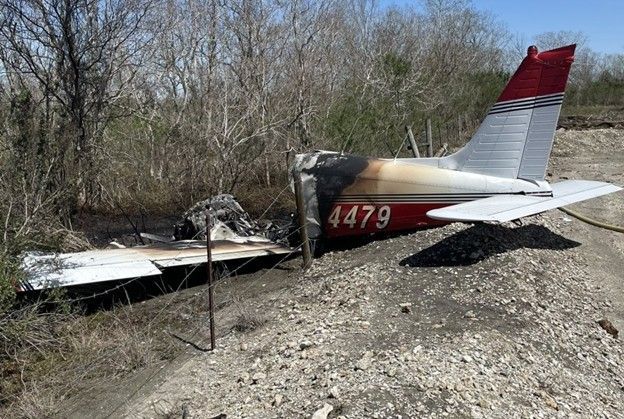
Pilot OK after small plane’s landing gear collapses at Fort Lauderdale Executive Airport; runway back open
By 7 News WSVN
FORT LAUDERDALE, FLA. (WSVN) - A small plane experienced a landing gear collapse while attempting to take off from Fort Lauderdale Executive Airport, prompting a temporary runway closure, officials said.
Fort Lauderdale Fire Rescue units responded to the scene shortly after 2:30 p.m., Thursday.
The Piper Seneca twin-engine plane lost part of its landing gear on its right-hand side, below the wing, causing it to come down and spin sideways.
The pilot was the only person on board and was not hurt.
Authorities waited for the arrival crane and flatbed truck that removed the aircraft from Runway 31, which runs from the southeast to the northwest.
The runway has since reopened to air traffic.
https://wsvn.com/news/local/broward/pilot-ok-after-small-planes-landing-gear-collapses-at-fort-lauderdale-executive-airport-runway-back-open/
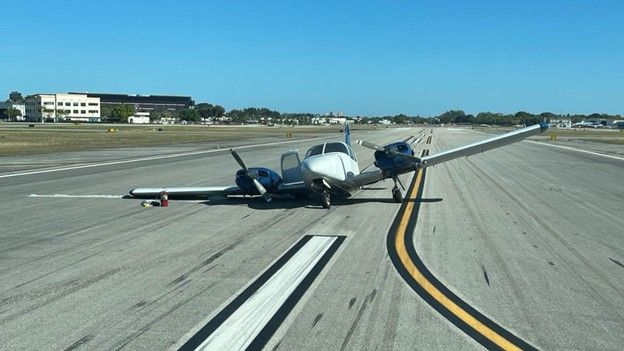
1 injured in aircraft incident at Grand Strand Airport
by Simon Williams
NORTH MYRTLE BEACH, S.C. (WPDE) — An "aircraft-related incident" at the Grand Strand Airport on Thursday afternoon has left one injured, according to North Myrtle Beach Fire Rescue.
In an online post, the agency said their crews are on scene and have the incident under control.
According to the FAA, a Cirrus SR22 plane crashed at the Grand Strand Airport in North Myrtle Beach on Thursday.
The pilot was the only occupant on board, according to the FAA, and an investigation will be conducted.
EMS personnel are evaluating the person for minor injuries, according to the post.
Fire and North Myrtle Beach Police Department crews are remaining on scene until MYR Airport officials arrive.
https://abcnews4.com/news/local/1-injured-in-aircraft-incident-at-grand-strand-airport
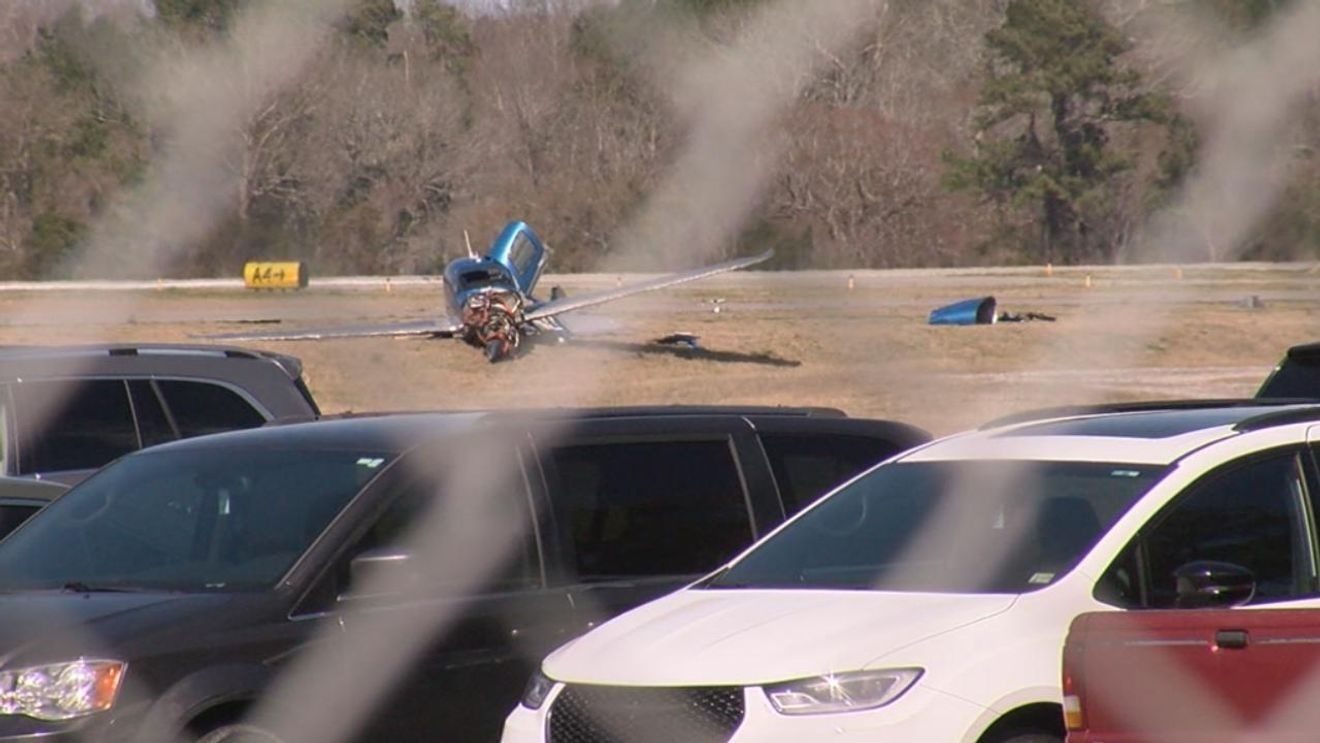
Buddha Air plane makes safe landing without front wheel
By Rastriya Samachar Samiti
KATHMANDU, MARCH 6
A Buddha Air aircraft en route from Janakpur to Kathmandu landed safely despite missing one of its two front wheels.
The plane touched down at Tribhuvan International Airport without the wheel, confirmed TIA General Manager Jagannath Niraula. "Although this is not a major issue, an investigation has been launched into the missing wheel," he stated.
Meanwhile, Buddha Air Information Officer Dipendra Karna reported that the aircraft, bearing the call sign 9N-A NH, completed its flight safely.
Following the detection of a technical fault, the plane has been handed over to the airline's technical team for further inspection, he added.
https://thehimalayantimes.com/nepal/buddha-air-plane-makes-safe-landing-without-front-wheel
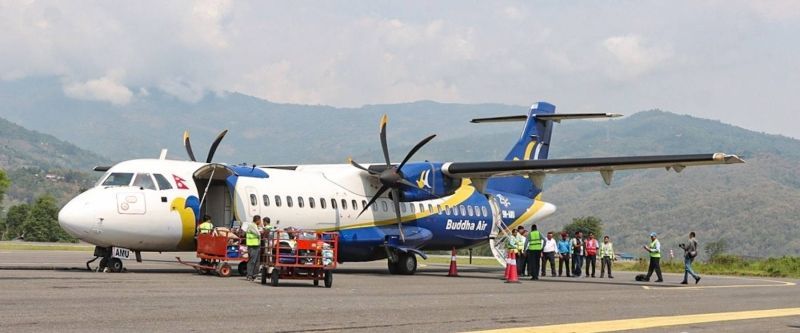
SpaceX’s Starship spacecraft explodes midflight for a second time, disrupting Florida air traffic
By Ashley Strickland and Jackie Wattles, CNN
(CNN) — A SpaceX Starship spacecraft, the upper portion of the most powerful launch system ever built, exploded during its eighth test flight Thursday, disrupting air traffic and marking the second consecutive failure for the vehicle this year.
The uncrewed Starship mission lifted off at 5:30 p.m. CT (6:30 p.m. ET) from SpaceX’s Starbase facility in South Texas, with the spacecraft riding atop a 232-foot-tall (71-meter-tall) Super Heavy rocket booster.
After about 2 ½ minutes of firing, the Super Heavy booster separated as planned from the Starship’s upper stage, setting itself up for a successful landing within the “chopstick” arms of “Mechazilla,” or SpaceX’s launch tower near Brownsville, Texas. It’s the third time SpaceX has successfully executed the chopsticks booster catch.
But less than 10 minutes into the flight, the Starship craft, which had continued on toward space, began to experience issues. Several of the vehicle’s engines visibly cut out during the livestream, and the ship began to tumble before SpaceX lost contact with it.
“Once you lose enough of those center engines, you’re going to lose attitude control,” said Dan Huot, SpaceX communications manager, on the livestream. “And so we did see the ship start to go into a spin, and at this point, we have lost contact with the ship.”
The loss of signal occurred at roughly the same point during this mission as with Flight 7 in January, when Starship exploded over populated islands in Turks and Caicos, littering the islands with debris.
It has not been confirmed where exactly the vehicle exploded during Thursday’s mission. But the explosion was visible from parts of Florida and over the Caribbean, according to reports from residents of those locations that were shared with CNN.
The Federal Aviation Administration halted flights into Miami, Fort Lauderdale, Palm Beach, and Orlando airports Thursday evening for “falling space debris” until 8 p.m. ET.
The FAA also temporarily kept flights from departing from Fort Lauderdale/Hollywood International Airport and Miami International Airport. Flights leaving those airports were still delayed on average by 30 and 45 minutes, respectively, as of Thursday night.
“We’ve got a lot of measures in place, like debris response areas, where we coordinate very closely with air traffic control,” Huot said on the livestream. “We have a lot of measures put (in place) before we ever launch a rocket to make sure that we’re keeping the public safe. Those worked last time and they’re actively in work right now.”
SpaceX shared an update with a few details on the incident several hours after the flight.
“Prior to the end of the ascent burn, an energetic event in the aft portion of Starship resulted in the loss of several Raptor engines,” according to a statement from SpaceX. “This in turn led to a loss of attitude control and ultimately a loss of communications with Starship. Final contact with Starship came approximately 9 minutes and 30 seconds after liftoff.”
SpaceX said that Starship flew within a designated launch corridor.
“Any surviving debris would have fallen within the pre-planned Debris Response Area,” according to the statement. “There are no toxic materials present in the debris and no significant impacts expected to occur to marine species or water quality. If you believe you have identified a piece of debris, please contact your local authorities or the SpaceX Debris Hotline at 1-866-623-0234 or at recovery@spacex.com.”
Meanwhile, the FAA is requiring SpaceX to perform a mishap investigation into the loss of the Starship vehicle, according to a statement released by the agency.
“A mishap investigation is designed to enhance public safety, determine the root cause of the event, and identify corrective actions to avoid it from happening again,” according to the statement. “The FAA will be involved in every step of the SpaceX-led mishap investigation process and must approve SpaceX’s final report, including any corrective actions. A return to flight is based on the FAA determining that any system, process, or procedure related to the mishap does not affect public safety.”
Thursday’s launch was SpaceX’s second go at getting Flight 8 off the ground. The company waved off a Monday attempt due to “too many question marks,” according to SpaceX CEO Elon Musk.
Flight 7’s fiery mishap
Thursday’s launch occured seven weeks after an explosive mishap prematurely ended Starship’s seventh test flight, raining debris over the islands of Turks and Caicos on January 16.
The FAA — which licenses commercial rocket launches — is still overseeing an investigation into the incident, but the agency gave SpaceX the green light February 28 to launch Flight 8. The agency noted that the probe into the Flight 7 mishap was ongoing, but the FAA determined SpaceX had “met all safety, environmental and other licensing requirements for the suborbital test flight,” according to a statement.
In its statement to CNN given after the January Flight 7 mishap, the FAA said that it told the Turks and Caicos government that the archipelago was located within a potential hazard area related to the Starship launch.
The agency also said that, before the test flight launched, it required SpaceX to map out “hazard areas sufficient to ensure that the probability of casualty to a member of the public on land or on board a maritime vessel does not exceed one in one million.”
“No Caribbean islands, including Turks and Caicos, exceeded this threshold,” the agency said.
The seventh test flight also exploded less than 10 minutes into flight.
The company believes the root cause was a leak that occurred in the rear section of the vehicle near a tank containing superchilled liquid oxygen, or a form of rocket propellant.
While no property damage or injuries were reported, one vehicle was struck on the island of South Caicos, and debris caused brief flight disruptions as air traffic controllers rushed to reroute planes away from the site of the explosion.
However, residents of the archipelago of Turks and Caicos told CNN they are still finding debris from the spacecraft littering beaches and roadways. The local government worked with SpaceX to craft a debris recovery plan. However, the contents of the plan have not been made public and it’s not clear who is paying for the cleanup effort.
Neither SpaceX nor the Turks and Caicos government responded to requests for comment on the plan.
A Turks and Caicos government account on Instagram shared an advisory to the public Thursday regarding the Flight 8 incident.
“We wish to advise the public that this evening’s SpaceX launch appears to have broken up in flight,” the advisory read. “We are in contact with the US FAA, SpaceX and UK agency leads to confirm the position. Post incident protocols have been engaged. The National Security Secretariat will continue to keep the public apprised as we work to ensure the safety and security of our Islands.”
Why these incidents are different
SpaceX has long embraced an engineering and development philosophy it calls “rapid iterative development.” The goal has been to rapidly build Starship prototypes and put them on the launchpad with a willingness to blow them up.
What’s different about the last Starship mission in January and Thursday’s flight is where and how the debris fell.
While the first test flight of Starship and Super Heavy blew up a launchpad at SpaceX’s Starbase facilities in 2023, January’s Flight 7 and Thursday’s Flight 8 both allowed Starship to travel out over the Atlantic and Caribbean before exploding near populated islands.
Thursday’s mishap raises questions about why the FAA allowed Starship to launch before the agency’s investigation into the Flight 7 mishap was completed — and whether experimental rockets should be allowed to fly over populated areas.
A series of upgrades
Thursday’s flight test was intended to put Starship through its paces so mission teams could zero in on weak points. Engineers have removed a large number of heat shield tiles from Starship to test vulnerable areas across the spacecraft. The black hexagonal tiles are designed to protect the vehicle as it experiences temperatures exceeding 2,600 degrees Fahrenheit (1,427 degrees Celsius) when reentering Earth’s atmosphere.
The failed test flight in January spurred SpaceX to make other upgrades and changes, including new vents and a “purge system” designed to prevent a fire, according to the company.
SpaceX said what mission teams learned from the Flight 7 mishap prompted them to alter lines that feed fuel to some of Starship’s engines and tweak propellant temperatures. Another change adjusted the vehicle’s “operating thrust target” — or how much power SpaceX aims for the engines to generate during flight.
Meanwhile, the Super Heavy booster has some upgrades of its own, including a more powerful flight computer.
About 17 ½ minutes after lifting off, Starship was planning to attempt to deploy a batch of mock Starlink satellites for the first time. Like the spacecraft, the demo satellites weren’t intended to reach orbit. But similar to the seventh flight test, Flight 8’s objectives were not tested before the incident occurred.
https://kesq.com/cnn-other/2025/03/06/spacex-launches-eighth-test-flight-of-starship-megarocket-after-an-explosive-flight-7/
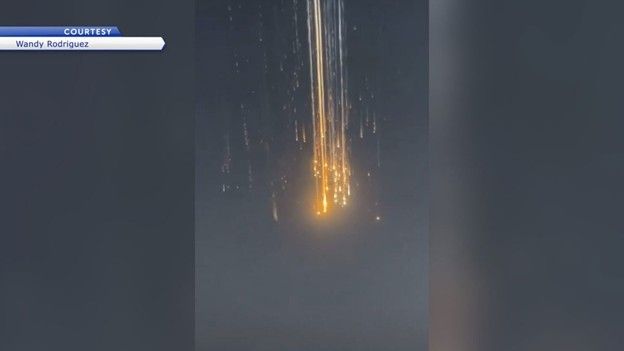
NTSB Final Report: Cirrus Design Corp SR20
The Airplane’s Right Fuel Tank Contained ¼ Of A Gallon Of Fuel And Was Not Breached
Location: Sanford, Florida Accident Number: ERA24LA124
Date & Time: February 27, 2024, 18:22 Local Registration: N485DA
Aircraft: Cirrus Design Corp SR20 Aircraft Damage: Substantial
Defining Event: Fuel starvation Injuries: 1 Serious, 1 Minor, 1 None
Flight Conducted Under: Part 91: General aviation - Instructional
Analysis: The airplane was returning from a local training flight when the accident occurred. The pilot receiving instruction was flying a practice instrument approach and after removing the view limiting device he noticed that the airplane’s altitude was low on the approach path. The flight instructor ultimately took control of the airplane and added engine power. The airplane continued to sink, and the flight instructor began to manipulate the throttle, but sensed that the
airplane was no longer producing engine power. He stated that he verified the fuel selector placement, though he could not remember which position the fuel selector was in, and that the mixture lever was in the full rich position. Shortly after, the airplane impacted an unoccupied airplane short of the runway and came to rest on a grassy area adjacent to the airport ramp.
A postaccident examination of the airplane’s engine revealed no evidence of any preimpact mechanical malfunctions or failures that would have precluded normal operation. Additionally, the airplane’s right fuel tank contained ¼ of a gallon of fuel and was not breached. The fuel selector was found in the right-tank position. A review of data recovered from the airplane’s avionics showed a decrease in fuel flow and subsequent loss of engine power about 1 minute before the airplane impacted the terrain. Based on this information, it is most likely that the fuel supply in the airplane’s right wing was exhausted during the landing approach, which resulted in the loss of engine power as the flight instructor attempted to add power to correct the airplane’s descent path.
Probable Cause and Findings: The National Transportation Safety Board determines the probable cause(s) of this accident to be -- A total loss of engine power due to fuel starvation and the flight crew’s mismanagement of the available fuel.
FMI: www.ntsb.gov

Today in History
18 Years ago today: On 7 March 2007 Garuda Indonesia flight GA200, a Boeing 737-400, overran the runway into a rice paddy at Yogyakarta, killing 21 occupants; 119 survived the accident.
Date: Wednesday 7 March 2007
Time: 07:58
Type: Boeing 737-497
Owner/operator: Garuda Indonesia Airways
Registration: PK-GZC
MSN: 25664/2393
Year of manufacture: 1992
Total airframe hrs: 35207 hours
Cycles: 37360 flights
Engine model: CFMI CFM56-3C1
Fatalities: Fatalities: 21 / Occupants: 140
Other fatalities: 0
Aircraft damage: Destroyed, written off
Category: Accident
Location: Yogyakarta-Adisutjipto Airport (JOG) - Indonesia
Phase: Landing
Nature: Passenger - Scheduled
Departure airport: Jakarta-Soekarno-Hatta International Airport (CGK/WIII)
Destination airport: Yogyakarta-Adisutjipto Airport (JOG/WARJ)
Investigating agency: NTSC
Confidence Rating: Accident investigation report completed and information captured
Narrative:
Garuda Indonesia flight GA200, a Boeing 737-400, overran the runway into a rice paddy at Yogyakarta, killing 21 occupants; 119 survived the accident.
Garuda flight 200 was an early morning service from Jakarta (CGK) to Yogyakarta (JOG). The pilot in command (PIC) was the pilot flying, and the copilot was the support/monitoring pilot.
The PIC intended to make an instrument landing system (ILS) approach to runway 09 at Yogyakarta and briefed the copilot accordingly. Yogya Approach cleared the aircraft for a visual approach, with a requirement to proceed to long final and report runway in sight. Although the crew acknowledged the visual approach clearance, they continued with the ILS approach, but did not inform the controller. The descent and approach were conducted in visual meteorological conditions.
At 07:55:33, when the aircraft was 10.1 miles from the runway, it was 1,427 feet above the initial fix of 2,500 feet published in the approach chart, and the airspeed was 283 knots. The pilot in command descended the aircraft steeply in an attempt to reach the runway, but in doing so, the airspeed increased excessively. As the aircraft was being flown at speeds that were in excess of the wing flaps operation speed, the copilot elected not to extend the flaps as instructed by the PIC. During the approach, the Ground Proximity Warning System (GPWS) alerts and warnings sounded 15 times and the copilot called for the PIC to go around.
The PIC continued the approach with flaps 5 degrees, and the aircraft attained the glideslope near the runway 09 threshold. Flaps 5 degrees is not a landing flap setting. The aircraft crossed the threshold, 89 feet above the runway, at an airspeed of 232 knots, 98 knots faster than the required landing speed for flaps 40 degrees. The wind was north easterly at 9 knots. The groundspeed was 235 knots. The aircraft touched down at an airspeed of 221 knots, 87 knots faster than landing speed for 40 degrees flap. Shortly after touching down, the copilot called, with high intonation, for the PIC to go around.
The aircraft overran the departure end of runway 09, to the right of the centerline at 110 knots. The aircraft crossed a road, and impacted an embankment before stopping in a rice paddy field 252 meters from the threshold of runway 27 (departure end of runway 09). The aircraft destroyed by the impact forces and an intense, fuel-fed, post-impact fire.
CAUSES:
"1. Flight crew communication and coordination was less than effective after the aircraft passed 2,336 feet on descent after flap 1 was selected. Therefore the safety of the flight was compromized.
2. The PIC flew the aircraft at an excessively high airspeed and steep descent during the approach. The crew did not abort the approach when stabilized approach criteria were not met.
3. The pilot in command did not act on the 15 GPWS alerts and warnings, and the two calls from the copilot to go around.
4. The copilot did not follow company instructions and take control of the aircraft from the pilot in command when he saw that the pilot in command repeatedly ignored warnings to go around.
5. Garuda did not provide simulator training for its Boeing 737 flight crews covering vital actions and required responses to GPWS and EGPWS alerts and warnings such as TOO LOW TERRAIN and WHOOP, WHOOP PULL UP."

